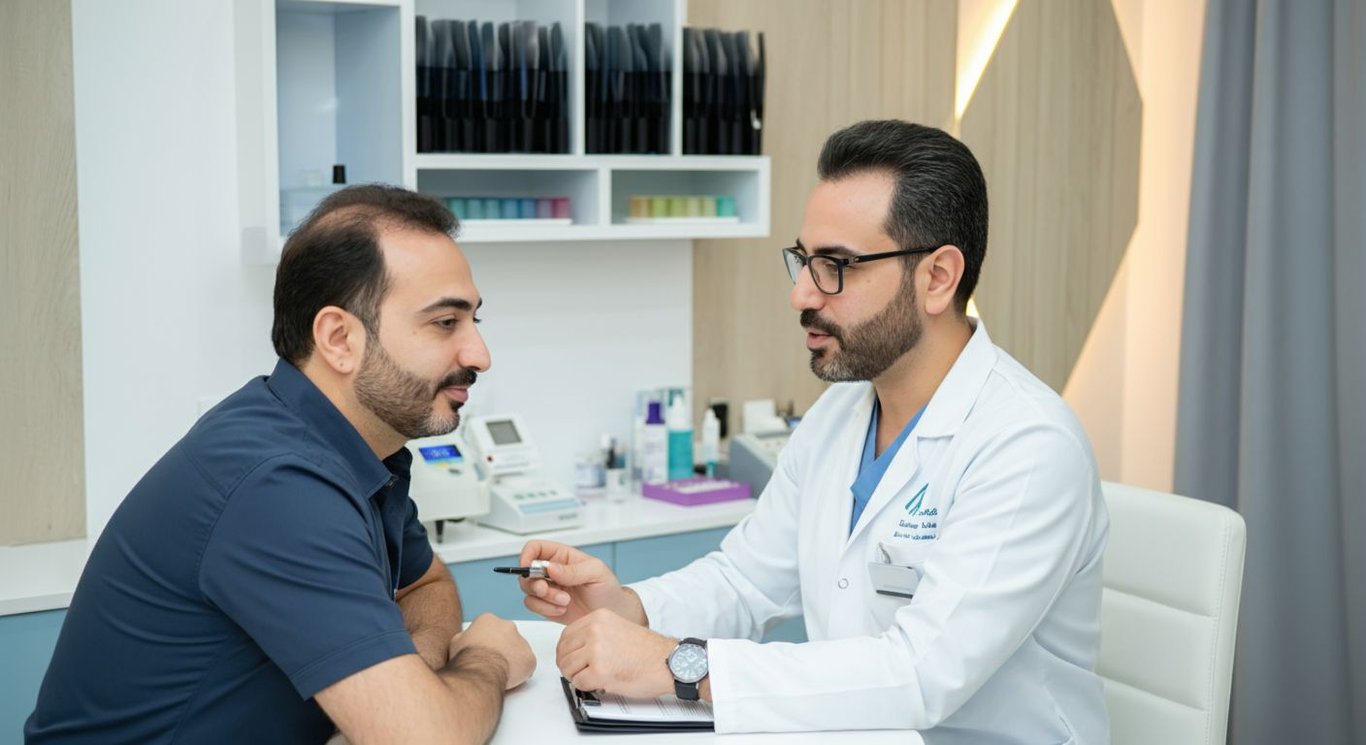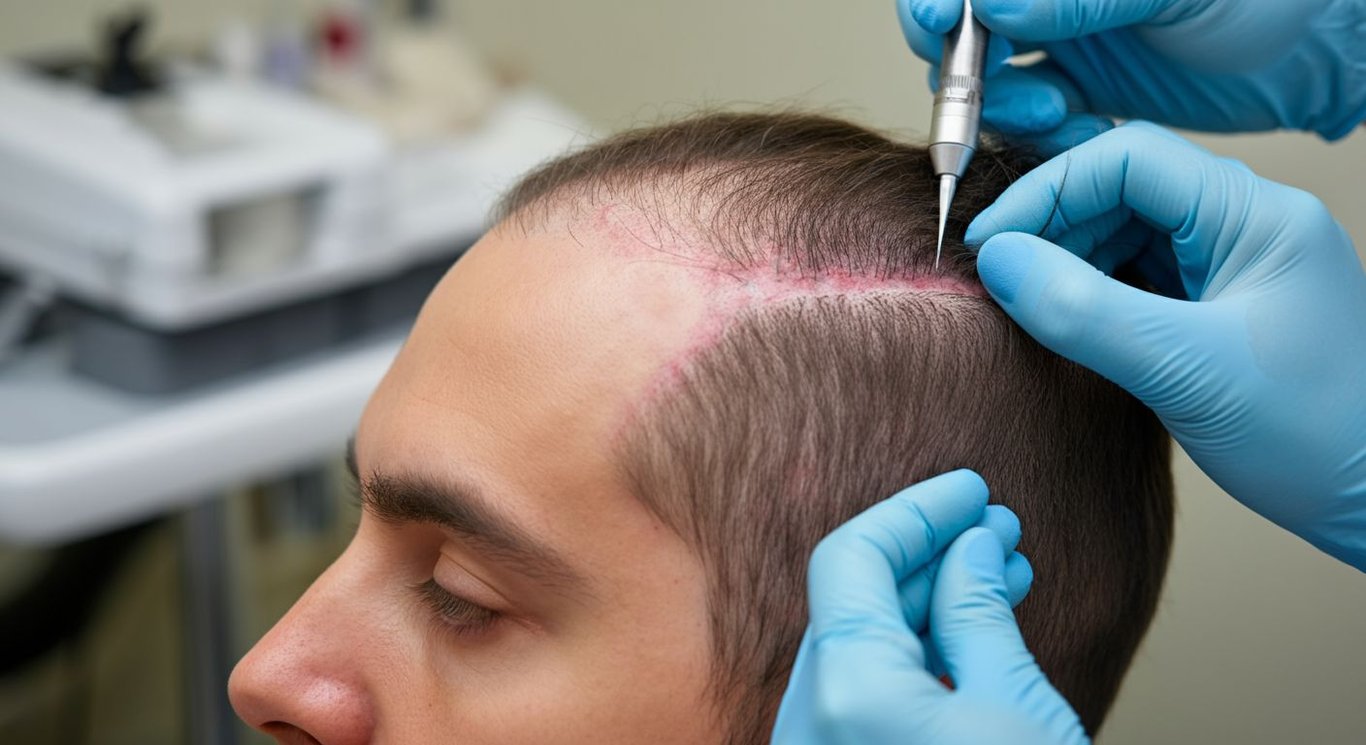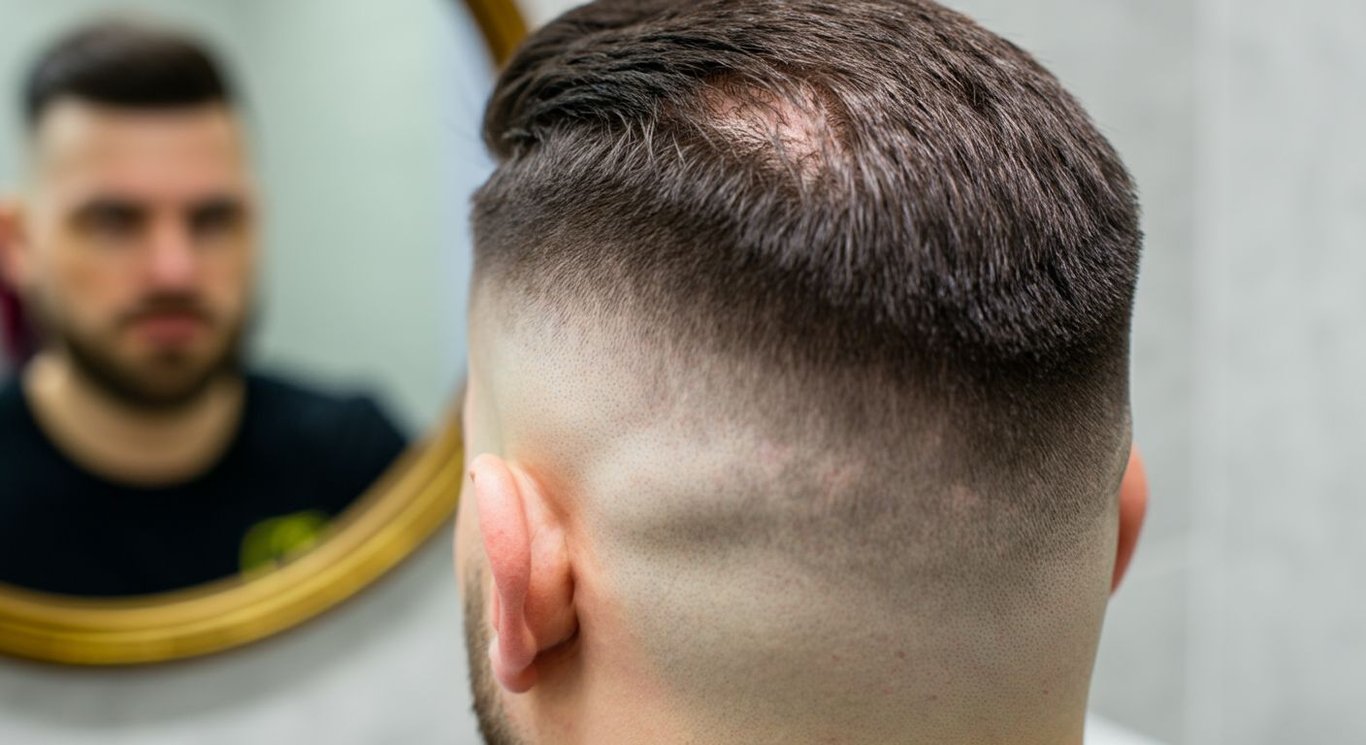Hair Today, Confidence Tomorrow: Exploring Hair Transplantation
Unlock confidence with innovative hair transplantation. Learn about techniques, compare FUE and FUT, and explore Istanbul's booming hair restoration market.
Hair loss can be a distressing experience, affecting not only one's appearance but also self-esteem. As modern solutions evolve, hair transplantation emerges as a leading method to combat balding, providing not just hair, but renewed confidence. This article delves into the facets of hair transplantation, offering insights into different techniques and post-operative care.
Decoding Hair Loss: Understanding Androgenetic Alopecia
Unraveling the Genetic Predisposition to Hair Loss
Androgenetic alopecia, a widespread condition affecting both men and women, is largely determined by genetics and hormonal influences. Commonly referred to as male or female pattern baldness, it manifests differently across genders, with men often experiencing a receding hairline, while women may notice a general thinning of hair. The primary drivers are genetic sensitivity to dihydrotestosterone (DHT) and the progressive miniaturization of hair follicles. Understanding these underlying factors is crucial for exploring effective hair restoration options. Hair loss can significantly impact self-esteem, prompting many to seek solutions like hair transplants, particularly in clinics known for their expertise, such as those found in Istanbul utilizing the latest techniques like follicular unit extraction (FUE).
Exploring Treatment Options for Androgenetic Alopecia
While androgenetic alopecia is a progressive condition, various treatments can mitigate its effects. Medical treatments include topical solutions like minoxidil and oral medications that may slow hair loss. For those seeking more permanent solutions, hair transplant procedures offer a reliable option. Follicular unit extraction (FUE) involves extracting individual hair follicles from a donor area and implanting them into the thinning areas. Platelet Rich Plasma therapy (PRP) is another option, that can stimulate hair growth. Many individuals explore options like turkish hair implants due to their reputation for quality and effectiveness. Understanding the range of available treatments helps individuals make informed decisions about managing their hair loss.
- Medical Treatments: Include topical solutions and oral medications designed to slow or stabilize hair loss. For example, minoxidil can stimulate hair growth, while certain medications can block DHT production.
- Surgical Hair Restoration: Surgical options such as FUE offer a long-term solution by transplanting hair follicles to balding areas. This approach replicates the natural density of hair, providing a fuller appearance.
- Advanced Therapies: Techniques like PRP therapy are used to enhance the results of surgical procedures and promote hair follicle health through the use of concentrated growth factors.

FUE vs. FUT: Choosing the Right Hair Transplant Technique
Understanding FUE and FUT Procedures for Hair Restoration
Follicular Unit Extraction (FUE) and Follicular Unit Transplantation (FUT) are two primary methods of hair restoration, each with distinct approaches. FUE involves the extraction of individual follicular units directly from the scalp, using small punches, which typically results in minimal scarring. This technique is favored for its less invasive nature and quicker recovery times. FUT, also known as strip harvesting, involves removing a strip of scalp from the donor area, dissecting it into individual follicular units, and then transplanting these units to the recipient area. The choice between FUE and FUT often depends on factors such as the extent of hair loss, the patient's preferences, and their anticipated lifestyle. Many patients are now seeking options to enhance their appearance, just like celebrity hair transplant transformations demonstrate, with figures such as Matthew McConaughey hair and Elon Musk hair surgery serving as examples of successful procedures.
Key Considerations When Choosing Between FUE and FUT
Selecting the right hair transplant technique requires careful consideration of several factors. FUE is often recommended for those who prefer minimal scarring and shorter recovery periods, making it ideal for active individuals. FUT, on the other hand, may be more suitable for individuals requiring a large number of grafts, as it can harvest a greater quantity of follicular units in a single session. A consultation with a qualified hair transplant surgeon is essential to evaluate the individual’s specific needs and expectations. This ensures that the chosen method aligns with the patient's desired outcome and lifestyle. An increasing number of individuals are exploring options with clinics specializing in turkish hair implants, drawn by competitive results. The advancements in techniques like PRP therapy and hair loss treatment have also improved the overall success and patient satisfaction in hair restoration.
- Scarring: FUE typically results in small, dot-like scars that are less noticeable, while FUT leaves a linear scar that may be visible if hair is worn very short.
- Recovery: FUE generally has a faster recovery period compared to FUT, with less discomfort and a quicker return to normal activities.
- Graft Quantity: FUT might be preferred when a large number of grafts are needed, as it allows for efficient harvesting of follicular units.

Beyond the Scalpel: Non-Surgical Hair Restoration Options
Exploring Platelet Rich Plasma (PRP) Therapy for Hair Growth
While a hair transplant offers a definitive solution for hair loss, Platelet Rich Plasma (PRP) therapy stands out as a non-surgical alternative that enhances natural cell function to stimulate new hair growth. This innovative treatment leverages the regenerative properties of your own blood platelets, making it a biocompatible option for those in the early stages of hair thinning. PRP involves drawing a small sample of your blood, processing it to concentrate the platelets, and then injecting the platelet-rich plasma directly into the scalp. The growth factors released by these platelets encourage hair follicle regeneration and can improve hair density and thickness. PRP therapy is particularly appealing because it is a minimally invasive procedure with a recovery period significantly shorter than surgical options, fitting seamlessly into a busy lifestyle. The treatment is beneficial for individuals experiencing early stages of androgenetic alopecia, offering a proactive approach to combat hair loss. As people seek less invasive options and better aesthetic results, PRP, turkish hair implants and celebrity endorsements such as Matthew McConaughey hair and Elon Musk hair surgery are becoming increasingly popular.
Benefits and Considerations of PRP Therapy
Choosing PRP therapy involves understanding its benefits and what to expect from the treatment. A key advantage is its natural approach, as it uses your body’s platelets, thus minimizing the risk of allergic reactions or side effects. The procedure itself is relatively quick, typically taking about an hour, and requires minimal downtime. However, it's important to note that PRP therapy usually requires multiple sessions to achieve noticeable results, and the outcomes can vary depending on individual factors such as the extent of hair loss and overall health. It’s also crucial to consult with a qualified specialist who can assess your specific condition and determine whether PRP is the right option for you. The effect of PRP can be bolstered by supplementary treatments and can be very effective in people looking for hair restoration. The longevity of the results can vary, and maintenance sessions may be recommended to sustain the benefits over time. PRP therapy provides a non-surgical path to hair rejuvenation.
- Non-Surgical: Offers a non-invasive alternative to surgical hair transplant options, making it suitable for those wary of surgery.
- Natural Process: Utilizes the patient's own blood platelets to promote hair growth, reducing the risk of allergic reactions.
- Quick Procedure: Typically completed within an hour, allowing patients to quickly return to their daily activities.
- Individual Results: Varies from person to person. Factors such as age, overall health, and the extent of hair loss can influence the outcome of PRP therapy.
- Multiple Sessions: Most people require multiple treatment sessions to see a noticeable improvement in hair density and thickness.
- Maintenance: To maintain the results, periodic maintenance treatments may be needed, as the effects of PRP can diminish over time.

Life After Transplant: Maximizing Growth and Maintaining Results
The Importance of Comprehensive Post-Operative Hair Care
Post-operative care is crucial to achieving the best possible outcomes. Immediately following a hair transplant, the scalp is sensitive and vulnerable. Proper care ensures graft survival and fosters a healthy environment for new hair to grow. This includes gentle cleansing, avoiding direct sun exposure, and adhering to specific instructions provided by the surgical team at estethica. Furthermore, patients are often advised to use specialized shampoos and conditioners that are mild and promote scalp health. These products help to minimize inflammation and prevent infection, both of which can impede the healing process.
Regular follow-up appointments are essential for monitoring progress and making any necessary adjustments to the care plan. These visits allow the medical team to assess hair growth, check for any complications, and provide tailored advice. For example, if a patient experiences increased sensitivity, the team can recommend specific soothing treatments. The comprehensive approach to post-transplant care supports the long-term success of the hair transplant, helping patients achieve and maintain a natural-looking, full head of hair.
- Specialized Products: Using gentle, pH-balanced shampoos and conditioners to support scalp health and new hair growth.
- Sun Protection: Shielding the scalp from direct sunlight to prevent damage to the newly implanted follicles.
- Regular Check-ups: Attending follow-up appointments to monitor progress and address any concerns promptly.
Understanding Costs: How Much Does a Hair Transplant Cost?
Factors Influencing Hair Transplant Investment Decisions
The financial investment in a hair transplant is influenced by a variety of factors that potential patients should consider. These factors usually include the specific technique employed, the number of grafts needed to achieve the desired density, and the experience and reputation of the clinic and surgeon. For instance, advanced methods like Follicular Unit Extraction (FUE) may involve different costs as opposed to more traditional methods. The scale of hair loss is another critical determinant, where extensive cases may demand a higher number of grafts, thus raising the overall financial commitment. Exploring options in various geographic locations can also significantly affect decisions, with cities like Istanbul offering competitive solutions that attract individuals seeking quality and value. Therefore, understanding these elements is essential for anyone considering hair restoration to ensure they align their expectations with realistic financial planning.
- Technique: Advanced methods often correlate with different investment levels due to the precision and technology involved.
- Extent of Hair Loss: Larger areas requiring coverage typically necessitate a higher number of grafts, which influence cost.
- Clinic Reputation: Experienced clinics often reflect their proficiency in their fee structures, considering the quality of care and expertise provided.
Success Stories: Celebrities and Personal Transformations
The Influence of Public Figures on Hair Restoration Perceptions
The openness of celebrities and public figures about their experiences with hair transplantation is reshaping public perception and reducing the stigma associated with hair restoration. When well-known individuals like Elon Musk or Matthew McConaughey undergo such procedures and the results are positively visible, it encourages others to consider similar options without the fear of judgment. These transformations offer tangible proof of the potential benefits of hair transplants, making the idea of seeking treatment more accessible and acceptable. Such actions foster a more informed and accepting societal view, thus making hair restoration a common topic.
Moreover, the media coverage of celebrity procedures sparks discussions about the advancements in hair transplant techniques, such as Follicular Unit Extraction (FUE), and the effectiveness of treatments like PRP therapy. This increased awareness allows individuals to explore and understand their options better, contributing to a more normalized view of cosmetic procedures. By sharing their experiences, public figures play a crucial role in educating and empowering others to address their hair loss concerns confidently. The trend reflects a broader cultural shift towards valuing self-care and personal enhancement. It also helps to raise awareness about quality hair transplant clinics, like estethica, and inspires more men to seek options to enhance their appearance, much like celebrity hair transplants demonstrate.
- Reduced Stigma: Public figures normalize hair restoration, encouraging broader acceptance.
- Increased Awareness: Media coverage of celebrity procedures educates the public about hair transplant options.
- Empowerment: Sharing experiences helps individuals confidently address their hair loss concerns.
Precision Hair Restoration with FUE, FUT, and PRP Therapy at estethica
estethica specializes in advanced hair restoration techniques, including Follicular Unit Extraction (FUE) and Follicular Unit Transplantation (FUT), providing tailored solutions for individual hair loss needs. The clinic also offers Platelet Rich Plasma (PRP) therapy, a non-surgical option that leverages the body's natural healing abilities to stimulate hair growth and improve hair density.
estethica's team of experienced surgeons and medical professionals are dedicated to delivering personalized care and achieving optimal results for each patient. The clinic stays at the forefront of hair restoration advancements, ensuring patients have access to the latest and most effective treatments.
Comprehensive Pre- and Post-Operative Care for Successful Hair Transplants
estethica emphasizes comprehensive patient care, providing detailed consultations and personalized treatment plans to meet individual needs and expectations. The clinic offers comprehensive post-operative care, including specialized products, sun protection guidance, and regular follow-up appointments to monitor progress and address any concerns.
Patients consistently praise estethica's commitment to excellence, highlighting the clinic's attentive staff, comfortable facilities, and remarkable outcomes. Many attribute their renewed confidence and improved quality of life to the successful hair restoration procedures performed at estethica.
Frequently Asked Questions
What is androgenetic alopecia, and how does it relate to hair loss treatment?
What are the main differences between FUE and FUT hair transplant techniques?
How does PRP therapy work as a non-surgical hair restoration option?
What is the importance of post-operative care following a hair transplant?
How do celebrity hair transplant transformations influence public perception of hair restoration?
Ready to discover your healthy beauty with estethica's expert team?
📞 Call Now for a Free Consultation!